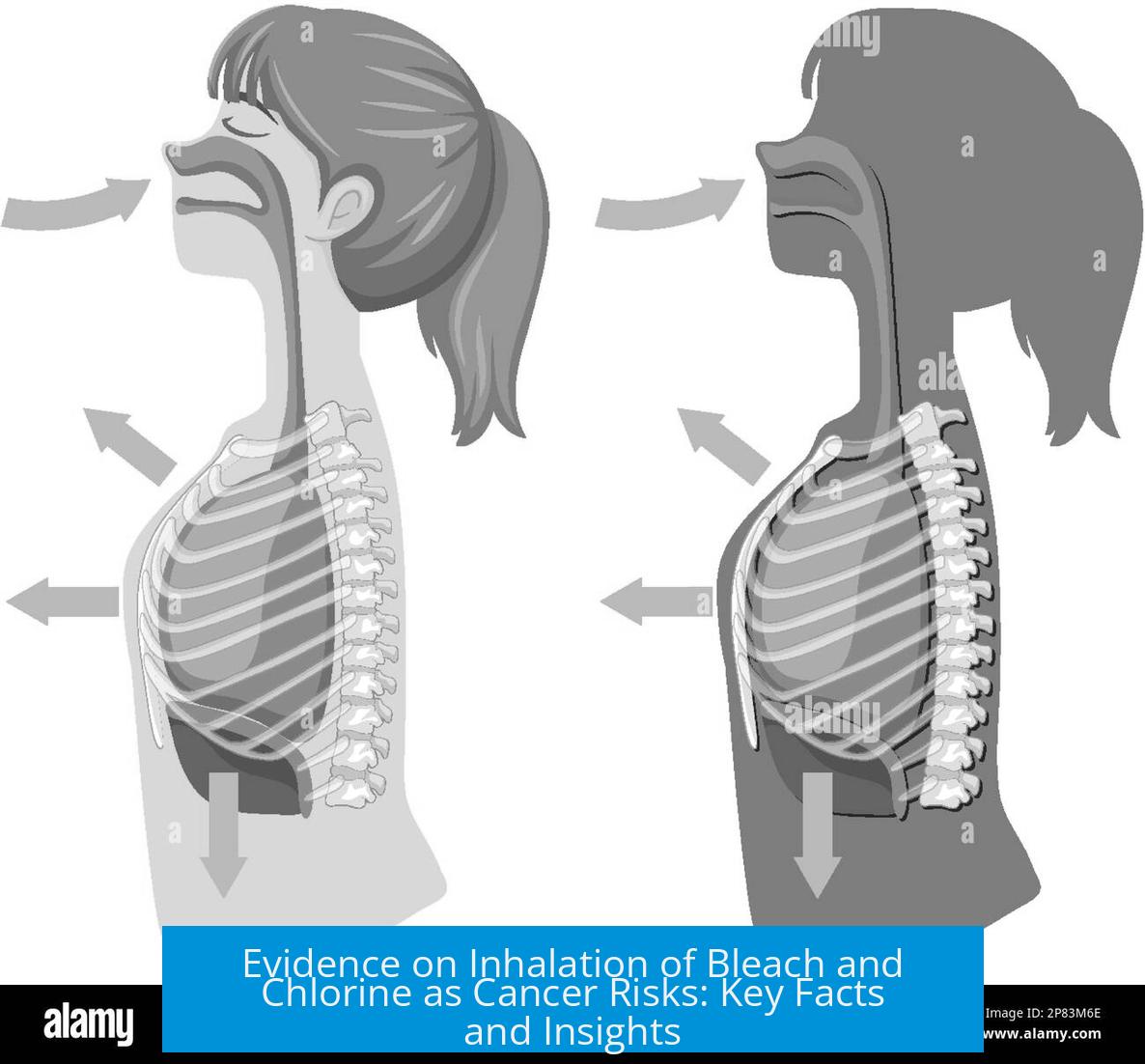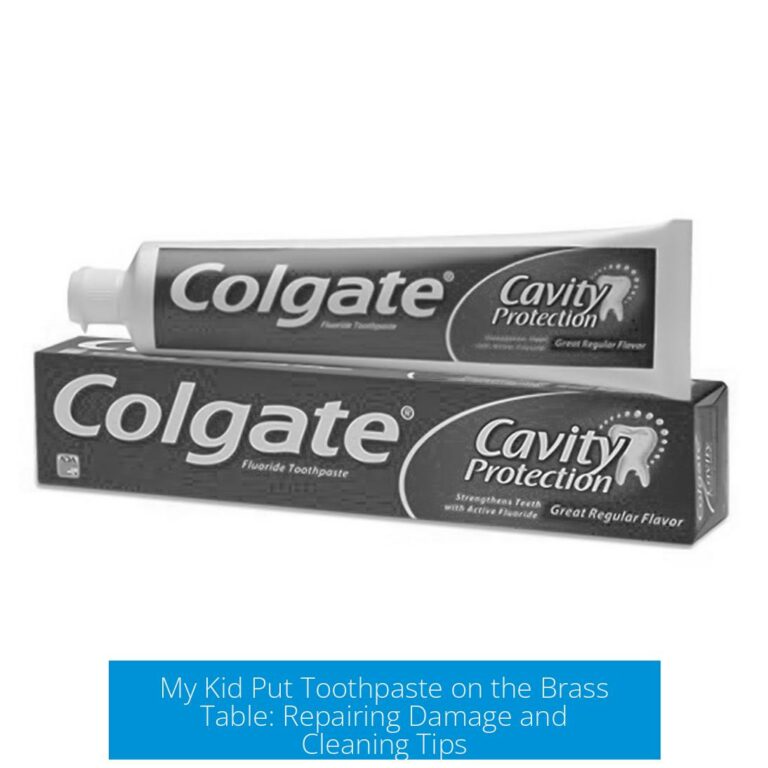Understanding Cancer Risks from Accidental Inhalation of Bleach or Chlorine
Current scientific evidence shows no convincing proof that accidentally or non-deliberately inhaling bleach or chlorine causes cancer. Chlorine itself is not recognized as a carcinogen. The risk of cancer from occasional or low-level exposure to these substances is negligible. Immediate toxic effects are a greater concern than long-term cancer risks.
Chlorine and Bleach: Carcinogen Status
Chlorine, a common element in bleaching and disinfectant products, does not meet criteria to be classified as a carcinogen. Regulatory bodies and scientific literature confirm that chlorine is not a direct cancer-causing agent.
- Chlorine is abundant in the human body and environment.
- Its use in cleaning, water treatment, and pools has not shown chronic carcinogenic outcomes at typical exposure levels.
- In some regions, organochlorine compounds are suspected carcinogens, but this does not apply to elemental chlorine or common household bleach.
Therefore, simple inhalation of chlorine gas or bleach odors, especially at low concentrations encountered during normal household cleaning, does not present a cancer risk.
Bleach Use and Chronic Effects
Bleach products, primarily containing sodium hypochlorite, have been used safely worldwide. There is no evidence linking typical bleach exposure to cancer development.
- Bleach is added in small amounts to drinking water in many countries.
- Medical applications such as bleach baths for eczema suggest a margin of safety in controlled low exposure.
- Acute exposure to high concentrations is toxic but not carcinogenic, causing immediate respiratory distress, irritation, or chemical burns rather than cancer.
Exposure Levels and Cancer Risk
The likelihood of cancer from bleach or chlorine depends largely on dose and frequency. Occasional or accidental inhalation involves trace amounts and short duration, factors insufficient to initiate carcinogenesis.
| Exposure Type | Cancer Risk | Comments |
|---|---|---|
| Infrequent, low-level exposure | Negligible | Common household cleaning, properly ventilated |
| Repeated or high concentration exposure | Still unproven as carcinogenic | Professional industrial use, improper handling may increase acute toxicity. |
| Chronic exposure to organochlorine compounds | Suspected carcinogens | Different chemicals, not elemental chlorine |
Scientists stress that without continued or high-concentration exposure, cancer risk remains very low. Acute respiratory dangers dominate any concern for bleach or chlorine inhalation.
Comparing Cancer Risks: Bleach/Chlorine vs Other Chemicals
Various environmental chemicals pose greater carcinogenic risks than chlorine or bleach.
- Substances like benzene, aflatoxins, and nitrosamines show stronger links to cancer.
- Cancer often initiates due to factors such as nutrient deficiencies rather than low-level chemical exposure.
- The probability of cancer from accidental bleach inhalation is lower than many everyday environmental factors.
These comparisons highlight how minimal the cancer risk is from bleach or chlorine inhalation within typical domestic settings.
Immediate Dangers vs. Long-term Cancer Risk
The main health hazard from bleach or chlorine gas is acute toxicity rather than cancer. Inhaling large amounts suddenly can cause severe lung irritation, coughing, or chemical burns.
- Proper ventilation after cleaning reduces inhalation risk.
- Handling pool chemicals carelessly can lead to injury but not necessarily cancer.
Immediate respiratory effects are a priority for safety awareness, whereas chronic cancer concerns are unsupported for accidental exposures.
Addressing Health Anxiety Related to Bleach/Chlorine
Public anxiety about chemicals often exceeds scientific evidence, leading to unnecessary fears and stress around bleach or chlorine exposure.
- Health anxiety and chemophobia (fear of chemicals) can distort risk perception.
- Individuals worrying about cancer from bleach smell benefit from consulting mental health professionals.
- Evidence-based reassurance helps reduce avoidable fear and improves quality of life.
Practical Advice to Minimize Risk
While cancer risk is minimal, reducing inhalation of bleach fumes is advisable to prevent irritation.
- Ensure rooms are well ventilated during and after cleaning.
- Avoid prolonged exposure to strong fumes, especially in enclosed spaces.
- Follow product instructions and avoid mixing bleach with other chemicals.
- Use protective gear like gloves and masks if handling concentrated bleach solutions.
Key Takeaways
- There is no scientific evidence that accidental or non-deliberate inhalation of bleach or chlorine causes cancer.
- Chlorine itself is not classified as a carcinogen, and typical household exposure is safe regarding cancer risk.
- Cancer risk is negligible unless exposure is frequent or at high concentrations not encountered in normal use.
- Acute toxicity from high-level inhalation poses greater health concerns than cancer from low-level exposure.
- Health anxiety and chemophobia often drive unwarranted fears rather than scientific facts.
- Proper ventilation and safe handling practices minimize any immediate risks.
Does accidental inhalation of bleach or chlorine cause cancer?
There is no scientific evidence that inhaling bleach or chlorine accidentally causes cancer. Chlorine itself is not recognized as a carcinogen.
Is chlorine considered a carcinogen by health authorities?
Chlorine is not classified as a carcinogen. Our bodies naturally contain chlorine, and typical exposure levels are safe regarding cancer risk.
Can low-level or occasional exposure to bleach vapors increase cancer risk?
The risk from infrequent or accidental exposure is negligible. Cancer risks only rise with repeated or high-concentration exposures, which are uncommon in normal household use.
Are the immediate dangers of bleach or chlorine worse than cancer risk?
Yes. Acute toxicity from high concentrations poses more immediate harm than any cancer risk, which remains unproven with typical exposures.
Why do some people worry about cancer from bleach exposure despite lack of evidence?
Many concerns arise from health anxiety or chemophobia, rather than from solid scientific data. Professional support can help manage these fears.





Leave a Comment